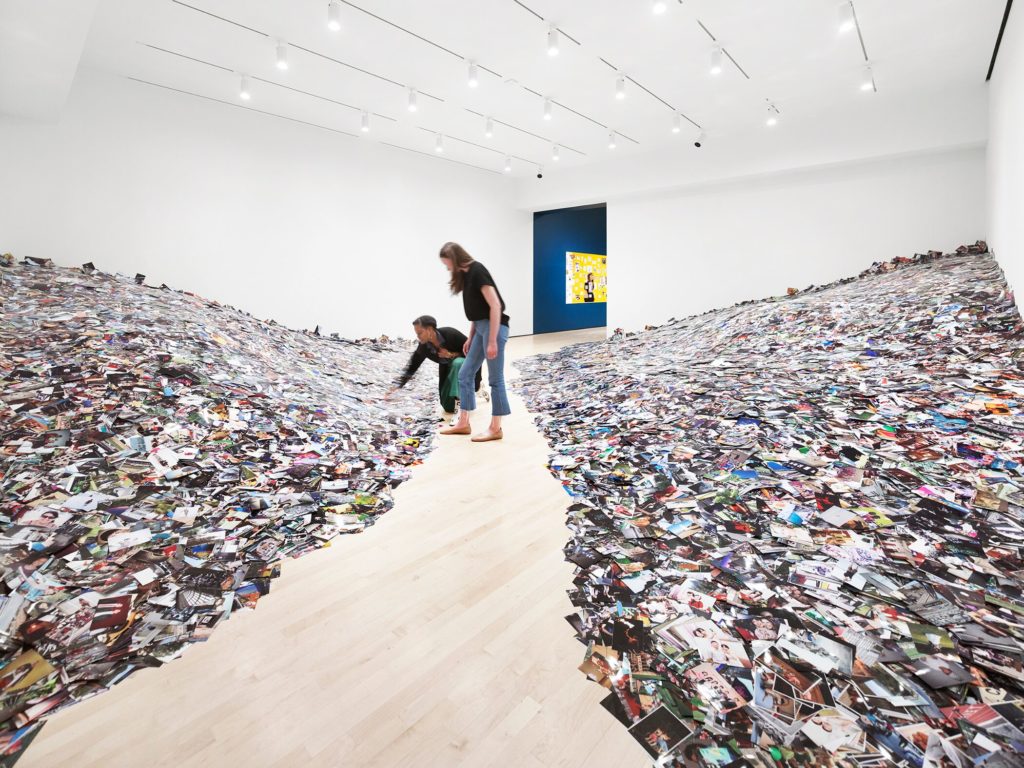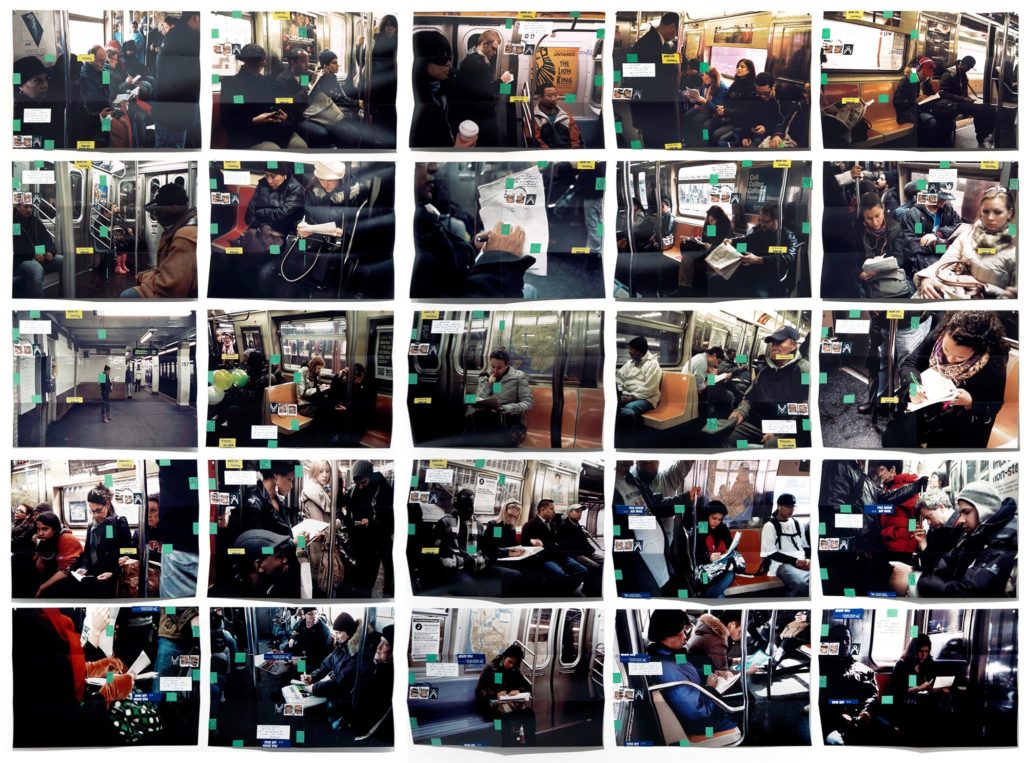In Defense of the Selfie
by rel robinson

If you type ‘snap + share’ into a Google search bar, the first result you will find listed is the market summary of Snap Inc., the conglomerate that started Snapchat—a messaging app which introduced disappearing content into the digital lexicon. If you type Snapchat into a search bar, the first listed result will be the application’s website. The header reads “Snapchat – The fastest way to share a moment!”
Our predisposition for broadcasting experiences in real time were not shepherded by photographic technology. In the 5th century BCE Chinese philosopher Mo-Ti first observed the effects of the camera obscura—lightwaves projected an inverted reflection of the surface they bounced off when passing through a small opening or around the edges of an opaque obstacle. He described this phenomenon as a collecting place. It was indeed a place; to view the image one had to be at its site of inception in a darkened room with a singular opening. It took more than two thousand years for the photographic image to be removed from that dark chamber. From the advent of the of 1-Hour Photo print shops, to the Polaroid, and the front facing camera, nearly every advancement made in photographic technology has worked to minimize the time between an experience and proof thereof.
At the San Francisco Museum of Modern Art (SFMOMA), the recently closed snap+share: transmitting photographs from mail art to social networks examined the origins behind our urgent desires to not only take our experiences with us but to broadcast them in turn.
snap+share explores how the photograph came to play such a ubiquitous role in this paradox by presenting a history of photo-sharing technologies, ways artists have contended with the liminality of photographs, and how the confluence of these conditions has impacted the contemporary. Entering the exhibition, you are immediately met by a series of highly-Instagrammable, brightly painted walls and story-tall vinyl photographs adhered—ideal for backdrops. A small camera icon beneath the wall text reads “Photography Encouraged #snapshare.”
Peter J. Cohen’s personal collection of anonymous, vernacular snapshots feature young people posing for the camera displayed against a yellow painted wall. Each photograph is labeled with a handwritten “Me” or “My Self,” sometimes with an indicating arrow, and presumably mailed to loved ones. The series suggests just how deep our desire to pollinate our relationships with images runs. We photograph things we cannot take with us. They serve as small exercises in contending with the ephemerality of it all—a temporary reprieve from the decidedly human desire for nearness and belonging.

Admittedly, witnessing someone document themselves can be cringe-worthy; but did the person who abstained from taking a selfie with the Golden Gate Bridge, a group photo at Disneyland, or texting a photo of the sunset live a fuller life? Did they learn more, love harder, see further because they ignored longing? Is the selfie taker shallow for prioritizing vanity over the visceral and affective qualities of the present moment? More concerned with the appearance of good time than the actuality of one; inundated with spectacle culture, of Kardashian-emulation or Influencer-worthy analytics? Maybe so. Or, are we all just irreconcilably and existentially lonely? The historical pervasiveness of our photographic impulses suggest the latter.
Leon-Charles Libonis’s collection of illustrated postcards confirm this. The early photographic postcards from 1889 featured the Eiffel Tower on the front and were sent from a post office in the tower itself, with the exact floor from which they came was specified on the back. While Cohen’s collections taut “here I am, thinking of you,” Libonis’s postcard declares, “I am here! Thinking of you right now, right here.” There is a sense of physical contingency in these artifacts, a small emblems, written by hand, intended to be held in the hands of another, like prototypical FaceTime. The desire to profess our presence to others wasn’t beset by contemporary technology. The selfie, defined by the New Yorker as a “ubiquitous symbol of millennial navel-gazing, [and] often used as Exhibit A in the argument by older generations that millennials are self-absorbed, narcissistic, and entitled,”1 embodies a cultural desire to proclaim our longing. A longing for amity, for omnipresence, for proximity to things we love and those that love us. Neither antiquated nor contemporary technologies change the very ephemeral nature of being a human being, they bring those qualities to the surface.
Erik Kessels’s 24 Hours In Photos (2011) bring a heavy-handed sense of scale to the digital deluge; the piece exists as an entire gallery filled with 5×7 inch prints of photographs uploaded to Flickr over the course of 24 hours. Its message is clear, and it drives the point home. However, the immersive installation serves more as a photo op than a conceptual contribution. It does ask the question in the digital era, what will be left behind, and how will it be found? What can be gleaned from the gluttonous outpour of digital images made so universally accessible.
The ability to share photographs may alleviate the anxiety of solitude, but the perceived proximity and accessibility of digital platforms mystifies the scale of distance. Peter Miller’s Dear Photography (2019) chronicles this space of transference. Twice a week, since January 1, 2019, the artist has mailed undeveloped postcard-sized sheets of silver-gelatin photographic paper, making camera-less images that trace the path of transit to the museum. The lumen prints are each a slight shade of orange that recall the color behind your eyelids when you look at the sun. The illegibility of their recordings confirm the persistence of absence—the irreconcilable distance that exists between anything from atoms to lovers. Miller’s project ramifies this.
Canadian artist Moyra Davey expands on the rhizome of transference with her iconic gentle gesture. In Subway Writers I (2011), photographic prints of subway riders writing on the subway were sent to fellow artists and gallerists through the mail by Davey. In effect, each print developed a patina of history and age—creases, scrawled addresses, and stamps echo the stories being told by the subjects pictured. Each tale, flawed, imprecise, and unfinished is contained in a single location of collective insularity- public transit. Even in our togetherness were are primarily concerned with our own self-determination. All beset by time itself, perfectly embodied by the trajectory of the train– mono-directional with multiple stops but a single destination. Davey allegorizes the desire to hold on– to dictate our own histories while they are still in motion.

Alternatively, Jeff Guess’ Addressability (2011) dilutes the indecipherability of placelessness, with his piece visualizing the transference of images as pixels in space. The only material listed is “custom software,” and it is as stale in its affect as it is in composition. A projection mapped video of pixels floating in an ambiguous dimension, slowly rejoining one another to articulate a selfie from an unnamed source—in the textbook fashion that one might visualize the transportation of digital muck moving from one device to another. Guess’s piece reflects an angular perspective on the culture of expressing ourselves to others with images through visualizing endless, saturated, archives of photographs floating in a formless entropic mess.
If our urgency for images can tell us one thing, it is our need for one another. As immediate as our ability might be to see or contact one another from discrete locations, there is an undoubtable isolation to the act of doing so. The exhibition expands and contracts comfortability with addressing that fundamental human impulse to inoculate oneself against isolation of being a time-sensitive creature, irrevocably alone in its own body.
However, within the overall context of snap+share, the immersive installations, brightly painted walls, photo murals, and site-specific hashtag its difficult to discern if the cultural predilection of image sharing is being examined or encouraged. If the curatorial intention is to examine the phenomenon of sharing images, the integrity of its critique is compromised when the exhibition becomes a content farm.
It begs the question, to what degree do museums have a responsibility to adapt to the cultural changes around us; if it is a museum’s function to address the general public, can it do so without complying the status quo?
snap+share: transmitting photographs from mail art to social networks ran at the San Francisco Museum of Modern Art from March 30–August 4, 2019.